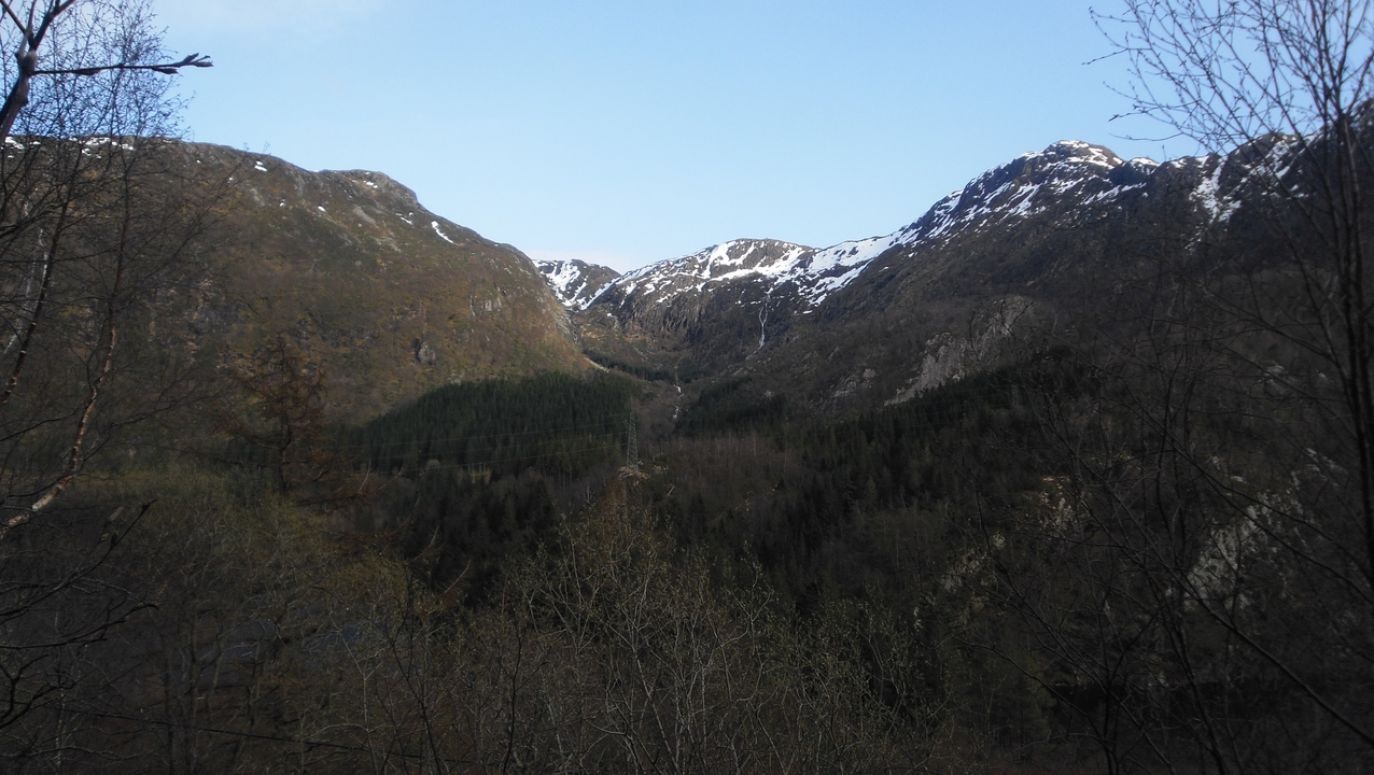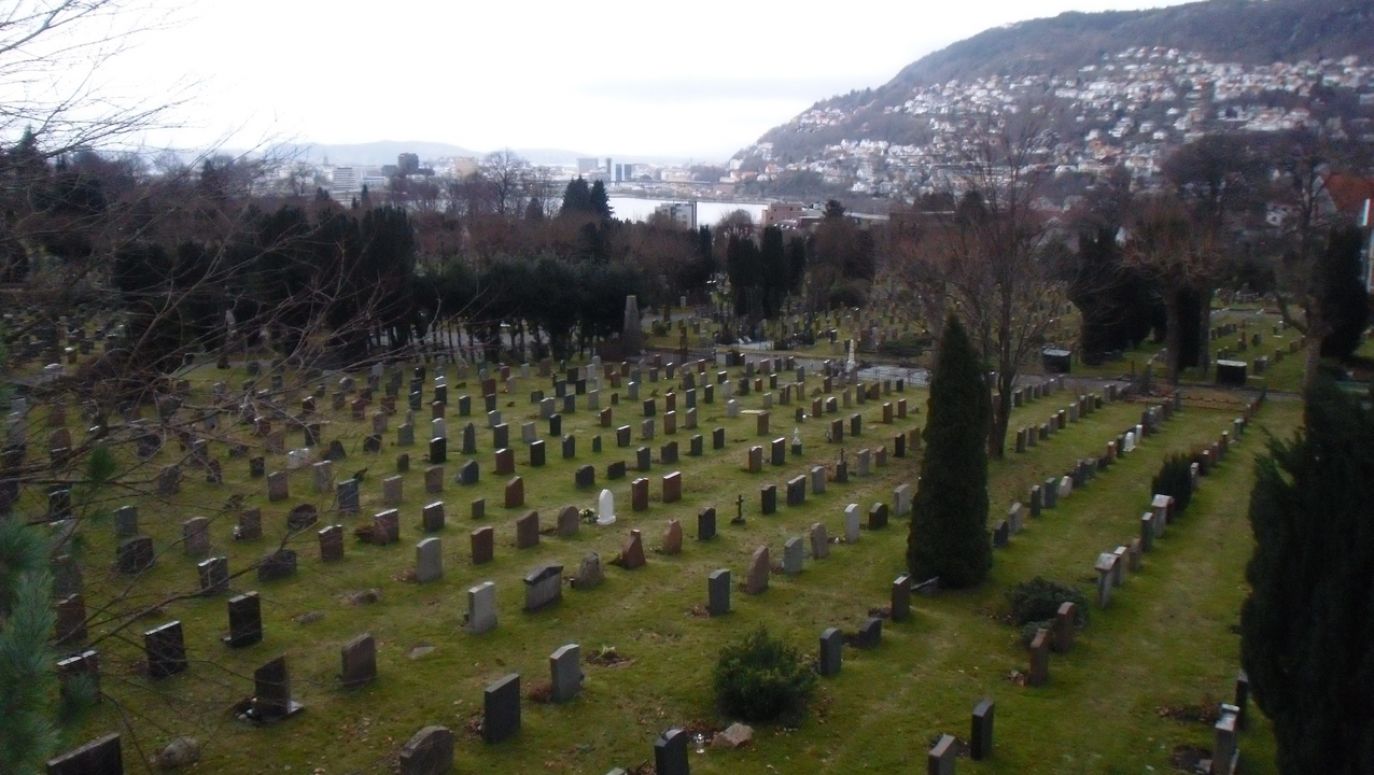The woman without a face. She didn’t want to be identified either in life or in death.
25.05.2022
A partially burned umbrella, a ring, clothing with the tags removed.
And passports with false data. To this day, we don’t know who the victim from Ice Valley was, and for more than 50 years, her death has been considered one Norway’s biggest crime mysteries.
November 1970 was exceptionally cold and rainy. Even for Bergen, lying at the confluence of the North and Norwegian Seas. One of the biggest cities in Norway, called the “gate of fjords”, is aiming for a place on the UNESCO World Heritage List, which it will reach 9 years later. Situated between the two longest fjords, Sognefjord and Hardangerfjord, it is one of the most picturesque places on the Norwegian coast. Cozy and intimate, it enjoys great popularity among trekking lovers.
They are drawn not only by the local hills, but also to Ice Valley (Isdalen), situated just a few kilometers from the city center. Infamous for many years as a place chosen for suicide, in the 1970s it became an attractive route for hiking enthusiasts. Most of them take care not to deviate from marked paths, but the unusual plant life growing in the meadows beyond the trails tempts and attracts. This was also the case on Sunday, 29 November 1970.
During a family walk with her dad and younger sister, a 12-year-old girl goes off the path for a moment into one of the clearings and sees something that she shouldn’t have. Something macabre: the burned body of a woman is lying on a mound of stones. After the initial shock and scream, the girl’s father tries to notify the authorities. But in 1970 there aren’t any cell phones yet. So the terrified family sets out on the way back along the narrow, gravel path. Praying that the murderer isn’t hiding among the tall spruces.
When, several hours later, the person on duty at the local police station picks up the phone, he instinctively knows that this isn’t a normal call. – In order to reach the place in the valley indicated by the witnesses as quickly as possible, first you had to climb an exceptionally steep slope – recalls investigator Carl Havor Aas, who was beginning his career in the police in November 1970. – The first sensation after reaching the clearing – the striking, sickly-sweet smell of burned meat. Horror. Altogether, at first glance it left the impression that the woman tripped and ended up on her back in the fire by accident. What was puzzling though was the position of her body: her arms raised beyond her torso, the so-called fencing position, indicating as if she had intentionally thrown herself into the fire – adds Aas.
Shortly, technicians and investigators with tracking dogs show up at the scene. On the grass, near the deceased, they secure burned personal items. Fragments of clothing, an umbrella, two plastic bottles and a ring. Soon it turns out that they only seem to be in disarray. The clothing was cut off even with the burn line, all tags were removed, all fingerprints had been carefully rubbed off of the bottles, umbrella and the ring. – It was shocking that the perpetrator was covering not only their tracks, but those of the victim as well. It turned out that the woman’s fingertips were even filed down, which prevented fingerprints from being taken. Really, the only thing that could be determined was sex – continues the investigator.
After hours-long, penetrating analyses of the scene of the crime, nothing was found that could help to identify the deceased. So the investigator gives the case the number 134/70, and the deceased is named “Isdal Woman”. Over the course of 52 years, a huge number of theories are put forward about who she was, where she came from and how she died.
Covered Tracks
Three days after the macabre discovery in the valley, police identify two suitcases in baggage storage at the train station in Bergen. It is virtually certain that they belong to the woman from Isdal. A group of technicians is immediately sent to the spot. The baggage storage workers are astonished that two unassuming suitcases are treated with such special measures.
The investigators however take the suitcases, with the greatest care, for expert analysis. When the lab informs them that a fingerprint was left on a pair of sunglasses, they are convinced that they are only a step away from resolving the matter. It quickly turns out though that the fingerprint can’t be identified, and all of the things in the suitcases were scrupulously cleaned and deprived of any element that would aid in identification. There wasn’t even a biological trace on the toothbrush or comb. The same was the case for the wigs and several, pretend prescription glasses, placed in the suitcases.
All that piques the interest of the investigators is a business card of an Italian photographer, a notebook and a branded shopping bag. In the notebook, in neat writing, the woman noted a string of numbers and letters, ostensibly unrelated to one another. Almost immediately the theory emerges that this might be a code, like those used by secret agents…
The photographer from the business card is interrogated. It turns out that he ate dinner with the woman in a hotel. She is said to have told him that she came from a small town near Johannesburg. Supposedly she wore a wig. Then the purse found in the suitcase is analyzed. It turns out that it comes from a small store in the oil town of Stavanger. The son of the owner remembers a certain foreign woman who showed up at the store three weeks earlier, asking about galoshes. She allegedly chose the Celebrity model in blue, popular with women in the 1970s. Fragments of precisely this type of footwear, mostly burned, along with nylon stockings, were found by the body from Isdal.
Thanks to the talk with the shop owner from Stavanger, it’s possible to more or less describe the woman’s appearance: around 30-40 years old, medium height, dark hair, brown eyes, a round face and shapely legs. The shop owner also remembered that her English was quite weak and from time to time she managed to weave in a German word. She also exuded a strange smell. Some time later, investigators determined that this was the smell of… garlic. Little-known in 1970s Norway.
This isn’t much, but thanks to the initial sketch the investigators are able to check all of the hotels in the city. It turns out that a woman similar to the one from Isdal, a foreigner, checked in to the St. Svithun in Stavanger. The receptionist remembered that she introduced herself as Finella Lorck and said that she comes from Belgium. She stayed in the hotel for several nights. She was supposed to have left Stavanger for Bergen. The investigators followed this trail. Only that no Finella Lorck stopped at a hotel in Bergen…
Weeks pass, and the investigators are slowly running out of possibilities for identification. The Oslo police join the investigation. Experienced detective Rolf Harry Jahrmann becomes the head of a specially formed team. All reports on missing women are checked. None of them match the victim from Isdal.
The more time that passes from the discovery of the body in the valley, the more hypotheses appear. Is it possible that the unidentified woman was a spy? Or maybe she belonged to an international criminal organization, while she currently had the status of State witness? These trails also lead to a dead end. One thing is certain: the woman from Isdal did not want to be identified. Either in life or in death.
Eight passports, one foreigner
The last lifeline seems to be foreign entry forms. At the time, all foreigners crossing the Norwegian border had to fill them out. Not only do they require a name and surname, but the passport number and series, address of stay in Norway and a signature. Thanks to the notebook from the suitcase and the hotel bill, the police already has the presumed handwriting of the woman from Isdal
The handwriting of all foreign women is checked, who registered in hotels across all of Norway in the same time frame. The investigation leads to shocking conclusions however. The deceptively similar handwriting was shared by foreign women traveling through Norway and using at least… seven different passports. Besides Finella Lorck, Claudia Tielt, Vera Jarle, Alexia Zarna-Merchez, Claudia Nielsen, Genevieve Lancier and Elisabeth Leenhouwfr, registered in hotels in Oslo, Trondheim, Bergen and Stavanger. The Belgian embassy ruled out that any of these citizens listed above existed in reality.
So the only witnesses to the existence of the woman from Isdal are the shopkeeper from Stavanger and workers in hotels where she stayed. Among others, this included the then 21-year-old Hotel Neptune employee in Bergen. She remembered that the foreign woman was exceptionally self-confident and wore bold clothing. She appeared in the restaurant with pride and ease, which was absent among women traveling alone at the time. – But she did not look like a sportswoman, the type that puts on sports clothing and sets off to trek around the valley – said the Neptune employee.
Due to the absence of any sort of breakthrough in the investigation, the police asks for help from the agencies that have access to secret files. They are also able to break the code from the suspected notebook. It turns out to be a mundane record of a trip through Europe from the spring and fall of 1970. Soon, Interpol joins the investigation and the identities from the passports are sent to embassies across the world. And the same answer arrives from every direction: such a woman doesn’t exist.
Meanwhile, dental crowns, which were secured from the deceased, are subjected to expert analysis. A specialist from dental identification determines with all certainty that materials like these were never used on the territory of Scandinavia. – They have a very characteristic design, they were probably made in Eastern Europe – says Professor Gisle Bang, who studied the case of the woman from Isdal until she died in 2011. She never was able to identify the origin of the crowns however.
Another conclusion from the autopsy performed in 1970: in the few hours before her death the deceased was taking large doses of Fenemal, a sleep and sedative medicine, containing a derivative of barbituric acid. Some of the medicine did not yet manage to dissolve. In truth, Fenemal alone could not have led to death, but the amount that the victim swallowed would again suggest suicide.
At the time, technicians also determine that the fire site had been drenched in gasoline. Would the woman have been able to set herself alight? According to detective Oskar Hordnes, the head of the investigation, it was likely. Especially that, in his opinion, the Isdal Woman may have suffered from persecution mania. This was suggested by the wigs, different identities, covering up tracks and hiding. All of this leads to the investigation into the death of the Isdal Woman being closed just before Christmas, and the case files include the note: “suicide”.
A secret taken to the grave
Not all of the investigators agreed however with this finale to the case. One of those who doesn’t believe in the suicide version is Knut Haavik, who was at all costs trying to convince his superiors that this was a murder. He is joined by Harald Osland. – My father never wanted to put this matter on the shelf – says his son Tore, who wrote a book on the Isdal case based on preserved documents.
Despite reservations raised by several investigators, on 5 February 1971 the woman from the valley is buried. At the funeral, organized according to the Catholic rite, 16 police officers from Bergen are present. The deceased is buried in a white, zinc coffin, resistant to decomposition. This way, if it is ever possible to identify her and where she came from, she will be able to return home.







